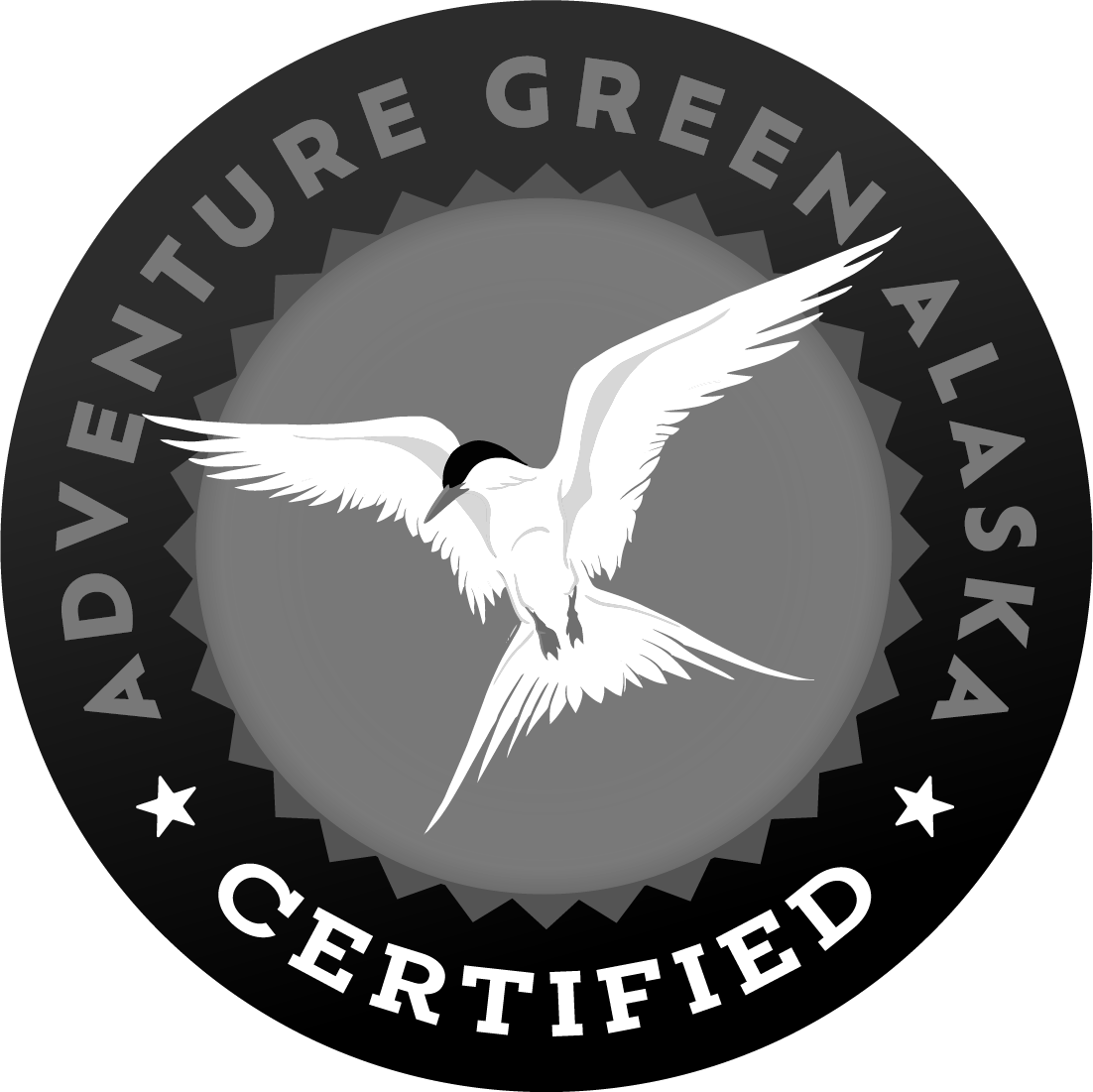

On a cool night in June with dark clouds on the horizon, thunder came rolling down the Kantishna valley. With each resounding boom, the storm was getting closer. This rainstorm was a welcome sight after a month of unseasonably high temperatures. We could use the rain in Denali to cool down and restore moisture to the dry vegetation. But amidst the storm one sight and sound was not welcome: lightning.
Smoke began to billow up. The lightning had ignited a fire on nearby Brooker Mountain (only 3 miles southwest of Camp Denali). As we watched the flames begin to engulf spruce trees, we called to alert the fire crews. With the fire danger high in Alaska, fire managers have been on standby, ready for action. In less than an hour, they responded with scooping aircraft dropping water on the fire. The planes flew over Wonder Lake to gather water to drop over the fire. Another plane passed by and smokejumpers dropped to mop and secure the perimeter. Within a short time, we witnessed the fire quickly extinguished. Only .5 acres burned that night last week on Brooker Mountain.
Currently, there are 118 active fires (and counting) in the state. On particularly windy days, we’ve had smoke blow over our lodges from nearly 100 miles away, limiting visibility and covering the mountain range. Last week smoke from a fire in interior Alaska caused the Parks Highway to close for nearly twenty four hours due to lack of visibility.
The National Park Service manages 93% of Denali National Park as a Limited Management Option meaning fires are generally allowed to take their natural course. The strategy protects human life and specific resources while allowing fire to contribute its natural role in the ecosystem. Much of Denali consists of higher elevations which lack substantial fuel and aren’t prone to fire. The majority of fires occur in the northwest corner of the park in fire-prone lowland black spruce forests. Since the 1950’s nearly 830,000 acres have burned in the park (compare that to the 1988 massive Yellowstone fire where nearly 800,000 acres burned that year alone).
Eighty-two percent of fires in Alaska are caused by lightning and burn in the boreal forest or tundra. Fire is a natural process that restores ecosystem health and wildlife habitat. It changes the vegetation structure and composition, as well as permafrost dynamics, nutrient cycling, and biodiversity.
Consider the fireweed, which we have just begun to see blooming in Denali. This beautiful wildflower thrives in burned or disturbed soiled. The seeds remain viable in the soil for many years. When a fire removes the dense vegetation and opens up the ground to light, the seeds germinate. This wildflower thrives, taking a scorched landscape and transforming it into a field of color.
----------
To guide fire and land management planning in Alaska’a national parks, the regional fire ecology program conducts studies in fire-adapted ecosystems. For more information on these studies, visit http://www.nps.gov/akso/nature/fire/index.cfm.






